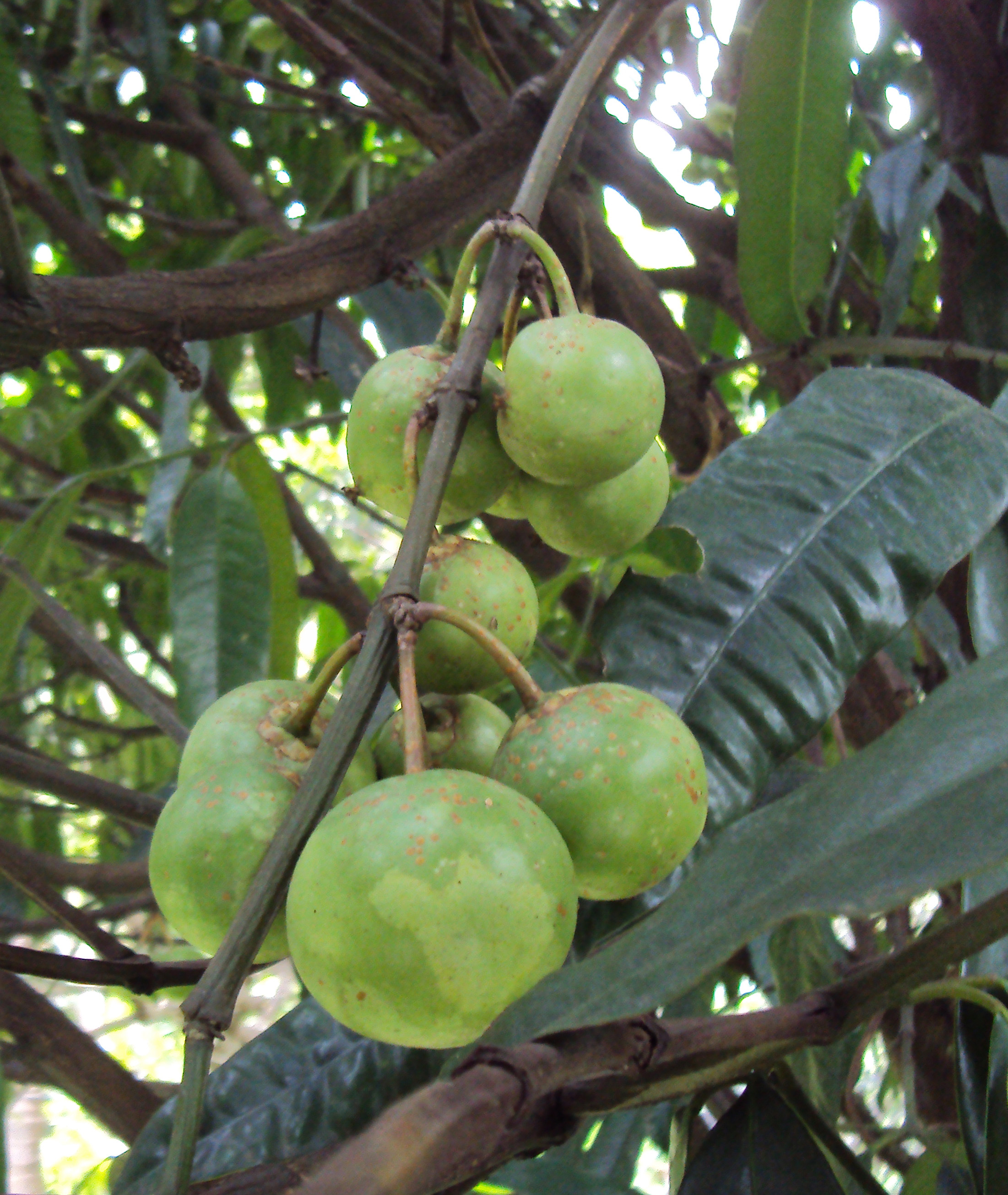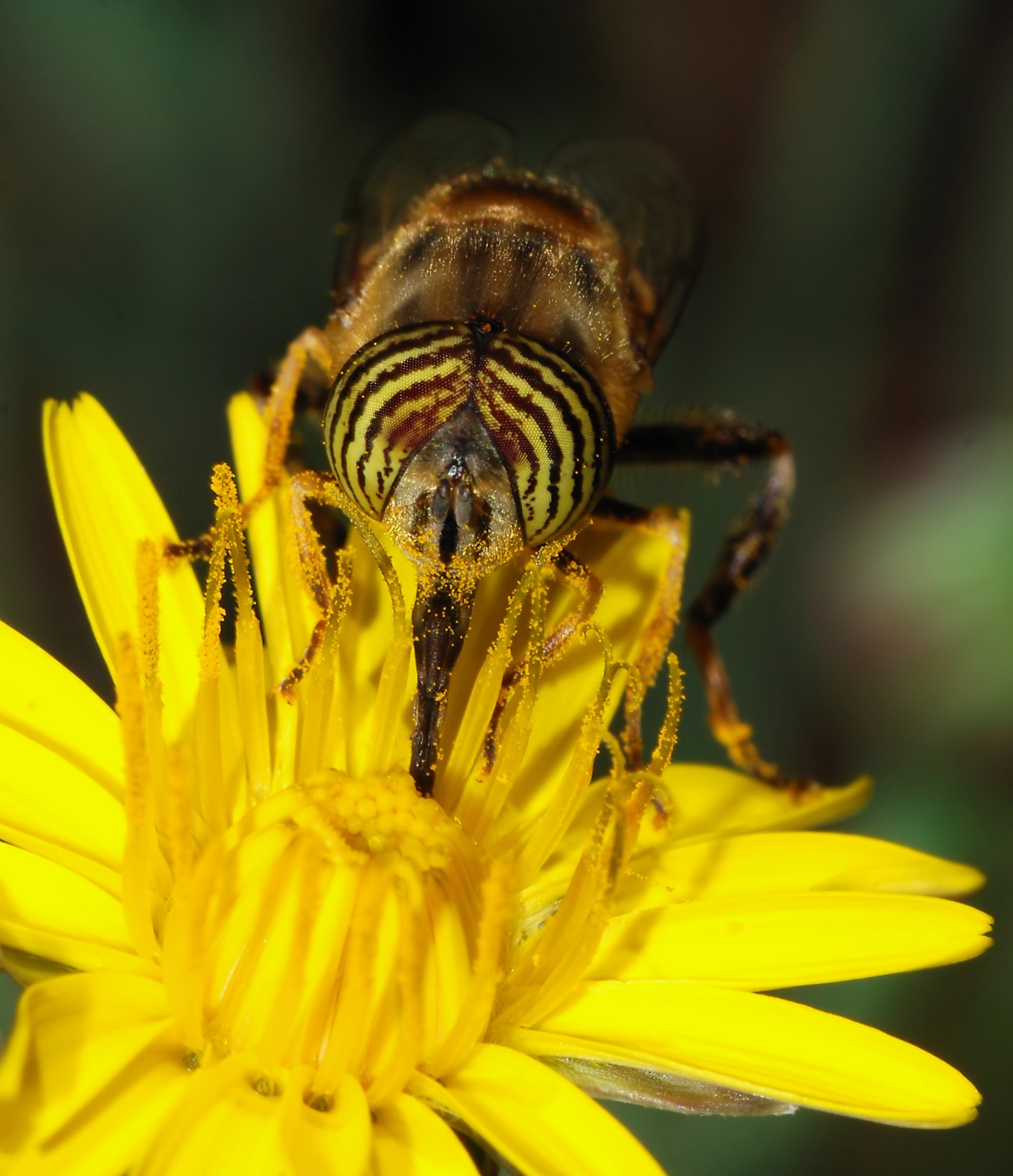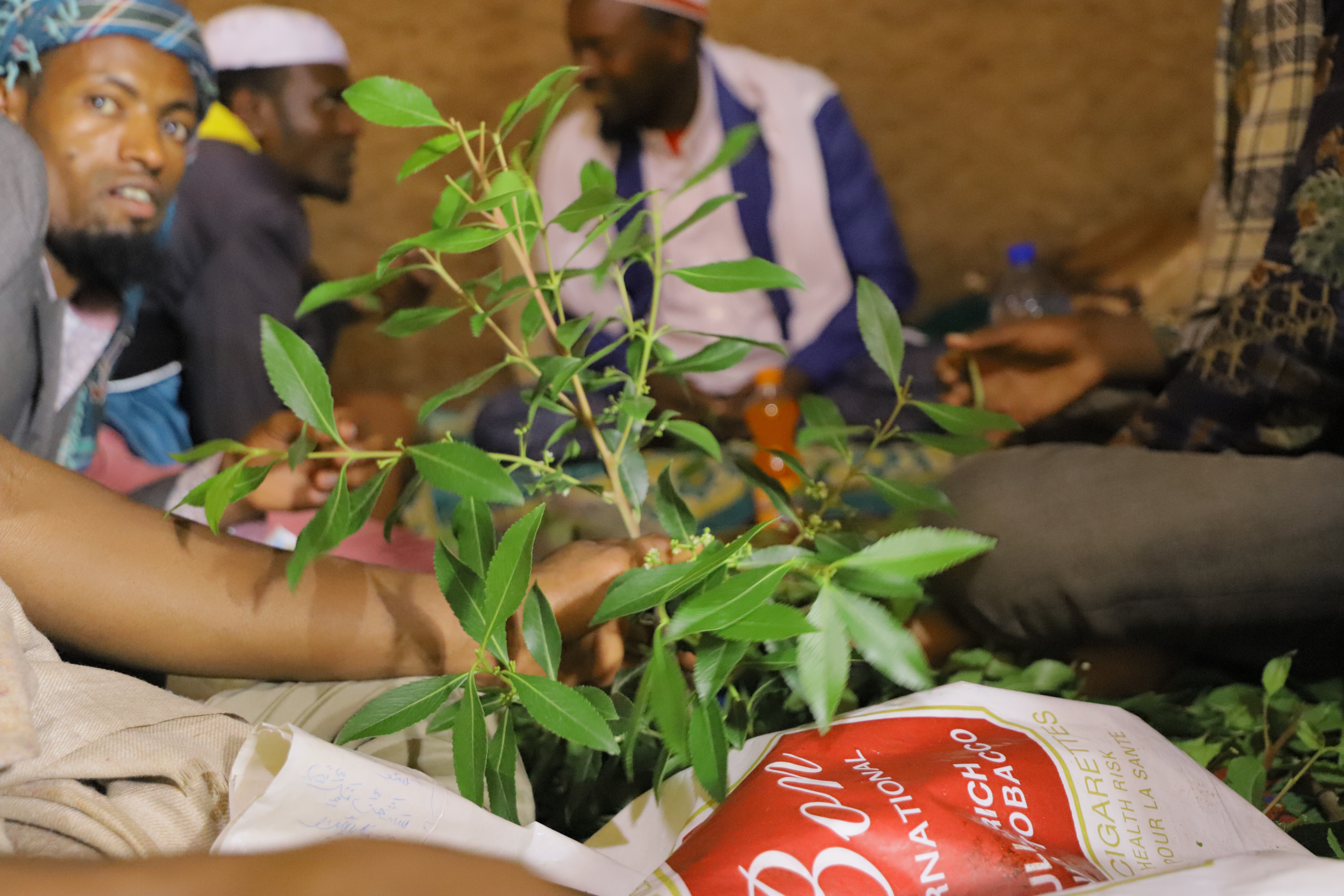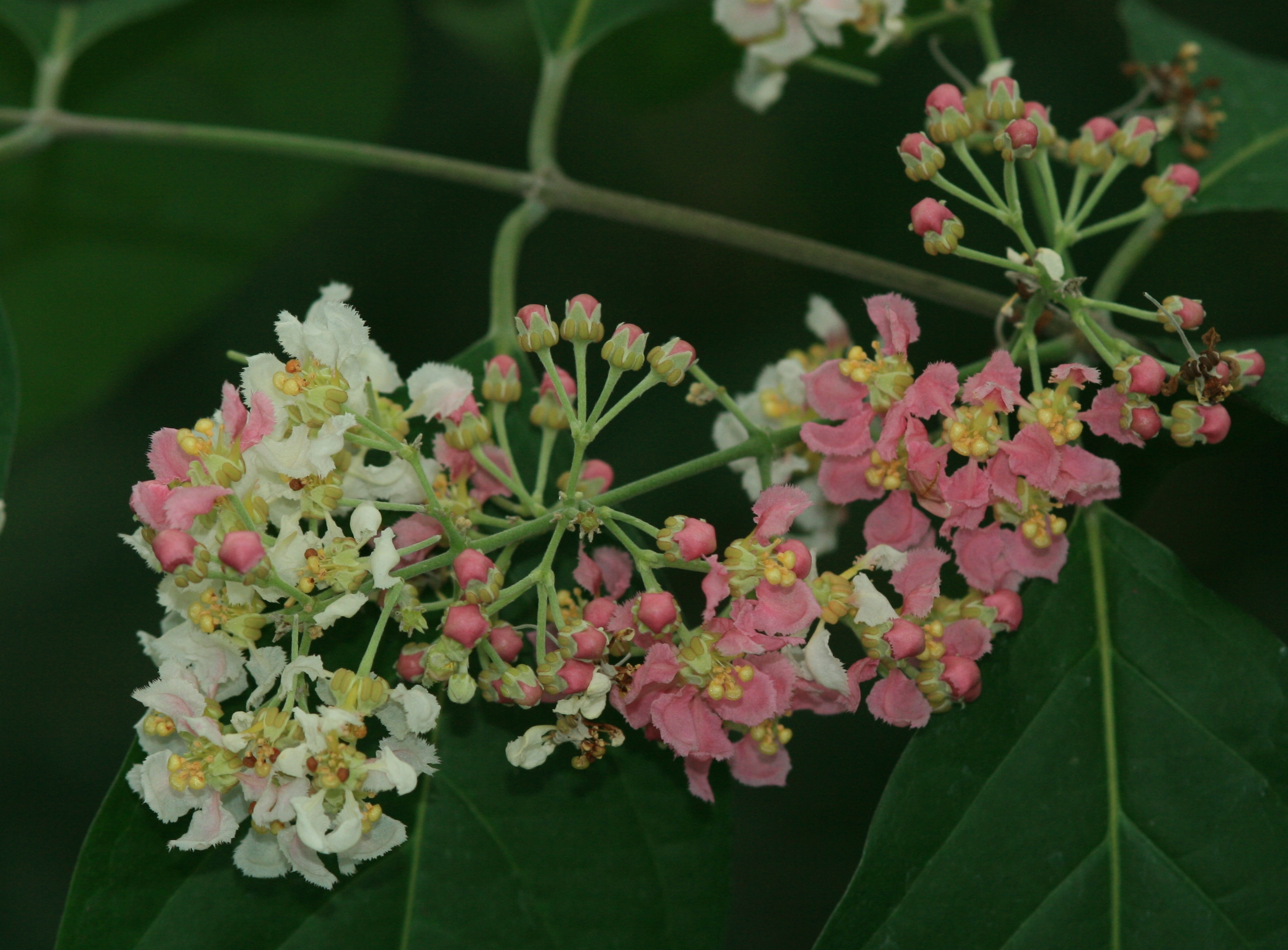|
Malpighiaceae Genera
Malpighiaceae is a family of flowering plants in the order Malpighiales. It comprises about 73 genera and 1315 species, all of which are native to the tropics and subtropics. About 80% of the genera and 90% of the species occur in the New World (the Caribbean and the southernmost United States to Argentina) and the rest in the Old World (Africa, Madagascar, and Indomalaya to New Caledonia and the Philippines). One useful species in the family is '' Malpighia emarginata'', often called acerola. The fruit is consumed in areas where the plant is native. The plant is cultivated elsewhere for the fruit, which is rich in vitamin C. Another member of the family, caapi or yagé ('' Banisteriopsis caapi''), is used in the entheogenic brew known as ayahuasca. One feature found in several members of this family, and rarely in others, is providing pollinators with rewards other than pollen or nectar; this is commonly in the form of nutrient oils (resins are offered by Clusiaceae The Cl ... [...More Info...] [...Related Items...] OR: [Wikipedia] [Google] [Baidu] |
Eocene
The Eocene ( ) is a geological epoch (geology), epoch that lasted from about 56 to 33.9 million years ago (Ma). It is the second epoch of the Paleogene Period (geology), Period in the modern Cenozoic Era (geology), Era. The name ''Eocene'' comes from the Ancient Greek (''Ēṓs'', 'Eos, Dawn') and (''kainós'', "new") and refers to the "dawn" of modern ('new') fauna that appeared during the epoch.See: *Letter from William Whewell to Charles Lyell dated 31 January 1831 in: * From p. 55: "The period next antecedent we shall call Eocene, from ήως, aurora, and χαινος, recens, because the extremely small proportion of living species contained in these strata, indicates what may be considered the first commencement, or ''dawn'', of the existing state of the animate creation." The Eocene spans the time from the end of the Paleocene Epoch to the beginning of the Oligocene Epoch. The start of the Eocene is marked by a brief period in which the concentration of the carbon isoto ... [...More Info...] [...Related Items...] OR: [Wikipedia] [Google] [Baidu] |
Indomalayan Realm
The Indomalayan realm is one of the eight biogeographic realms. It extends across most of South and Southeast Asia and into the southern parts of East Asia. Also called the Oriental realm by biogeographers, Indomalaya spreads all over the Indian subcontinent and Southeast Asia to lowland southern China, and through Indonesia as far as Sumatra, Java, Bali, and Borneo, east of which lies the Wallace line, the realm boundary named after Alfred Russel Wallace which separates Indomalaya from Australasia. Indomalaya also includes the Philippines, lowland Taiwan, and Japan's Ryukyu Islands. Most of Indomalaya was originally covered by forest, and includes tropical and subtropical moist broadleaf forests, with tropical and subtropical dry broadleaf forests predominant in much of India and parts of Southeast Asia. The tropical forests of Indomalaya are highly variable and diverse, with economically important trees, especially in the families Dipterocarpaceae and Fabaceae. Major ecol ... [...More Info...] [...Related Items...] OR: [Wikipedia] [Google] [Baidu] |
Clusiaceae
The Clusiaceae or Guttiferae Juss. (1789) (''nom. alt. et cons.'' = alternative and valid name) are a family (biology), family of plants including 13 genera and ca 750 species. Several former members of Clusiacae are now placed in Calophyllaceae and Hypericaceae. They are mostly trees and shrubs, with milky sap and fruits or capsule (fruit), capsules for seeds. The family is primarily tropical. More so than many plant families, it shows large variation in plant morphology (for example, three to 10, fused or unfused petals, and many other traits). According to the Angiosperm Phylogeny Group, APG III, this family belongs to the order Malpighiales. One feature which is sometimes found in this family, and rarely in others (e.g., Malpighiaceae), is providing pollinators with "pollination rewards" other than pollen or nectar; specifically, some species offer resin, which certain bees use in nest construction (each Clusiaceae species offers only one type of reward). Taxonomic history ... [...More Info...] [...Related Items...] OR: [Wikipedia] [Google] [Baidu] |
Nectar
Nectar is a viscous, sugar-rich liquid produced by Plant, plants in glands called nectaries, either within the flowers with which it attracts pollination, pollinating animals, or by extrafloral nectaries, which provide a nutrient source to animal Mutualism (biology), mutualists, which in turn provide plant defense against herbivory#Indirect defenses, herbivore protection. Common nectar-consuming pollinators include mosquitoes, hoverfly, hoverflies, wasps, bees, butterfly, butterflies and moths, hummingbirds, honeyeaters and Bat#Fruit and nectar, bats. Nectar is an economically important substance as it is the sugar source for honey. It is also useful in agriculture and horticulture because the adult stages of some predatory insects feed on nectar. For example, a number of predacious or Parasitoid wasp, parasitoid wasps (e.g., the social wasp species ''Apoica flavissima'') rely on nectar as a primary food source. In turn, these wasps then hunt agricultural pest insects as food ... [...More Info...] [...Related Items...] OR: [Wikipedia] [Google] [Baidu] |
Pollen
Pollen is a powdery substance produced by most types of flowers of seed plants for the purpose of sexual reproduction. It consists of pollen grains (highly reduced Gametophyte#Heterospory, microgametophytes), which produce male gametes (sperm cells). Pollen grains have a hard coat made of sporopollenin that protects the gametophytes during the process of their movement from the stamens to the pistil of flowering plants, or from the male Conifer cone, cone to the female cone of gymnosperms. If pollen lands on a compatible pistil or female cone, it Germination, germinates, producing a pollen tube that transfers the sperm to the ovule containing the female gametophyte. Individual pollen grains are small enough to require magnification to see detail. The study of pollen is called palynology and is highly useful in paleoecology, paleontology, archaeology, and Forensic science, forensics. Pollen in plants is used for transferring Ploidy#Haploid and monoploid, haploid male genetic ma ... [...More Info...] [...Related Items...] OR: [Wikipedia] [Google] [Baidu] |
Pollinator
A pollinator is an animal that moves pollen from the male anther of a flower to the female carpel, stigma of a flower. This helps to bring about fertilization of the ovules in the flower by the male gametes from the pollen grains. Insects are the major pollinators of most plants, and insect pollinators include all families of bees and most families of Aculeata, aculeate wasps; ants; many families of flies; many lepidopterans (both butterflies and moths); and many families of beetles. Vertebrates, mainly bats and birds, but also some non-bat mammals (monkeys, lemurs, Phalangeriformes, possums, rodents) and some lizards pollinate certain plants. Among the pollinating birds are hummingbirds, honeyeaters and sunbirds with long beaks; they pollinate a number of deep-throated flowers. Humans may also carry out artificial pollination. A pollinator is different from a pollenizer, a plant that is a source of pollen for the pollination process. Background Plants fall into pollination s ... [...More Info...] [...Related Items...] OR: [Wikipedia] [Google] [Baidu] |
Ayahuasca
AyahuascaPronounced as in the UK and in the US. Also occasionally known in English as ''ayaguasca'' (Spanish-derived), ''aioasca'' (Brazilian Portuguese-derived), or as ''yagé'', pronounced or . Etymologically, all forms but ''yagé'' descend from the compound Quechua word ''ayawaska'', from ''aya'' () and ''waska'' (). For more names for ayahuasca, see § Etymology. is a South American psychoactive decoction prepared from '' Banisteriopsis caapi'' vine and a dimethyltryptamine (DMT)-containing plant, used by Indigenous cultures in the Amazon and Orinoco basins as part of traditional medicine and shamanism. The word ayahuasca, originating from Quechuan languages spoken in the Andes, refers both to the ''B. caapi'' vine and the psychoactive brew made from it, with its name meaning “spirit rope” or “liana of the soul.” The specific ritual use of ayahuasca was widespread among Indigenous groups by the 19th century, though its precise origin is uncertain. Ayahuasca ... [...More Info...] [...Related Items...] OR: [Wikipedia] [Google] [Baidu] |
Entheogenic
Entheogens are psychoactive substances used in spiritual and religious contexts to induce altered states of consciousness. Hallucinogens such as the psilocybin found in so-called "magic" mushrooms have been used in sacred contexts since ancient times. Derived from a term meaning "generating the divine from within" entheogen have been used to facilitate transcendence, heaving, divination and mystical insight. Entheogens have been used in various ways, including as part of established religious rituals and as aids for personal spiritual development. Anthropological study has established that entheogens are used for religious, magical, shamanic, or spiritual purposes in many parts of the world. Civilizations such as the Maya and Aztecs used psilocybin mushrooms, peyote, and morning glory seeds in ceremonies meant to connect with deities and perform healing. They have traditionally been used to supplement many diverse practices geared towards achieving transcendence, including ... [...More Info...] [...Related Items...] OR: [Wikipedia] [Google] [Baidu] |
Banisteriopsis Caapi
''Banisteriopsis caapi'', also known as, caapi, soul vine, yagé (yage), or ayahuasca (the latter of which also refers to the psychedelic decoction made with the vine and a plant source of dimethyltryptamine) is a South American liana of the family Malpighiaceae. It is commonly used as an ingredient of ayahuasca, a decoction with a long history of its entheogenic use and holds status as a "plant teacher" among the Indigenous peoples of the Amazon rainforest. It was used by Indigenous peoples of South America for centuries, but it was first documented by Europeans in the 16th century and formally identified by botanist Richard Spruce in 1851. According to ''The CRC World Dictionary of Plant Names'' by Umberto Quattrocchi, the naming of the genus '' Banisteriopsis'' was dedicated to John Banister, a 17th-century English clergyman and naturalist. An earlier name for the genus was ''Banisteria'' and the plant is sometimes referred to as ''Banisteria caapi''. Other names include ' ... [...More Info...] [...Related Items...] OR: [Wikipedia] [Google] [Baidu] |
Vitamin C
Vitamin C (also known as ascorbic acid and ascorbate) is a water-soluble vitamin found in citrus and other fruits, berries and vegetables. It is also a generic prescription medication and in some countries is sold as a non-prescription dietary supplement. As a therapy, it is used to prevent and treat scurvy, a disease caused by vitamin C deficiency. Vitamin C is an essential nutrient involved in the repair of tissue, the formation of collagen, and the enzymatic production of certain neurotransmitters. It is required for the functioning of several enzymes and is important for immune system function. It also functions as an antioxidant. Vitamin C may be taken by mouth or by intramuscular, subcutaneous or intravenous injection. Various health claims exist on the basis that moderate vitamin C deficiency increases disease risk, such as for the common cold, cancer or COVID-19. There are also claims of benefits from vitamin C supplementation in excess of the recommended d ... [...More Info...] [...Related Items...] OR: [Wikipedia] [Google] [Baidu] |
Malpighia Emarginata
''Malpighia emarginata'' is a tropical fruit-bearing shrub or small tree in the family Malpighiaceae native to the Neotropics. The fruit is notable for its exceptional richness in vitamin C and versatility in various food preparations. Names Common names include acerola (from " azarole" for a similar looking old-world fruit), Guarani cherry, Barbados cherry, West Indian cherry, wild crepe myrtle, cereza, and cerise. Distribution ''Malpighia emarginata'' is originally native to the Lesser Antilles islands of the southern Caribbean Sea, extending into South America as far south as Brazil. It has been introduced and even naturalized elsewhere in the neotropics, such as in Peru, Venezuela, and Ecuador, as well as the southernmost parts of the contiguous United States (southern Florida and the Lower Rio Grande Valley (Texas), Rio Grande Valley of Texas). In Florida, it can be grown in protected locations as far north as Cape Canaveral. It is cultivated in the tropics and subtrop ... [...More Info...] [...Related Items...] OR: [Wikipedia] [Google] [Baidu] |
Royal Botanic Gardens, Kew
Royal Botanic Gardens, Kew is a non-departmental public body in the United Kingdom sponsored by the Department for Environment, Food and Rural Affairs. An internationally important botanical research and education institution, it employs 1,100 staff. Its board of trustees is chaired by Dame Amelia Fawcett. The organisation manages botanic gardens at Kew in Richmond upon Thames in south-west London, and at Wakehurst, a National Trust property in Sussex which is home to the internationally important Millennium Seed Bank, whose scientists work with partner organisations in more than 95 countries. Kew, jointly with the Forestry Commission, founded Bedgebury National Pinetum in Kent in 1923, specialising in growing conifers. In 1994, the Castle Howard Arboretum Trust, which runs the Yorkshire Arboretum, was formed as a partnership between Kew and the Castle Howard Estate. In 2019, the organisation had 2,316,699 public visitors at Kew, and 312,813 at Wakehurst. Its site ... [...More Info...] [...Related Items...] OR: [Wikipedia] [Google] [Baidu] |







